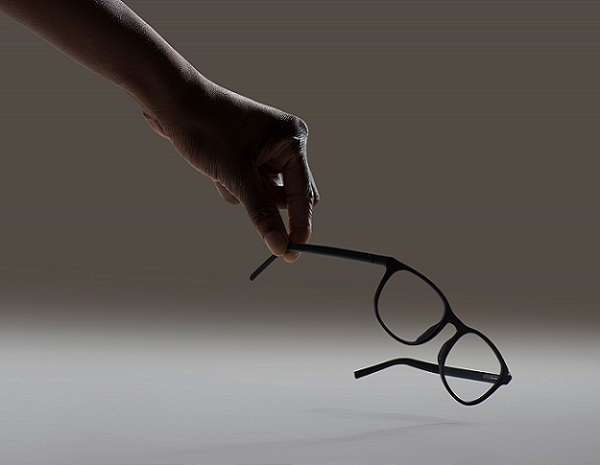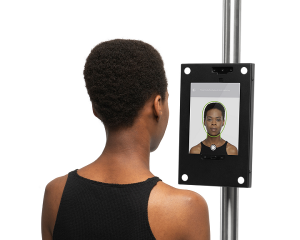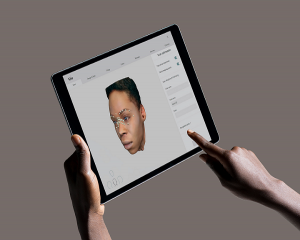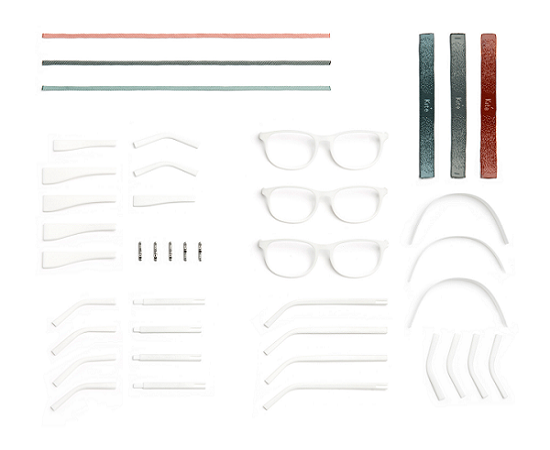Kite, an eyewear brand based in London, is partnering with Layer, industrial designer Benjamin Hubert‘s design agency, to provide 3D printed eyewear that fits the exact measurements of a customer’s face. The modular KiteONE eyewear range was officially launched last month at the DesignJunction contemporary interior design exhibition, which is part of the London Design Festival, though it won’t be available in stores until the spring of 2019.
Hubert told Dezeen, “KiteONE is the most tailored eyewear available, offering you both a high degree of comfort and aesthetic options.
“Wrapped in a highly intuitive service, it also has the potential to be super accessible and aims to bring more people into the creative process.”
 The new service, which is available with multiple custom details and specifications, ensures a perfect fit because the eyeglasses can be fabricated to fit the proportions and size of any customer’s face. Layer said that this amount of customization “is a first in the eyewear sector.” So just how does the KiteONE line fit so well? The answer is simple: 3D scanning.
The new service, which is available with multiple custom details and specifications, ensures a perfect fit because the eyeglasses can be fabricated to fit the proportions and size of any customer’s face. Layer said that this amount of customization “is a first in the eyewear sector.” So just how does the KiteONE line fit so well? The answer is simple: 3D scanning.
Customers can visit a Kite store to take advantage of the service which uses a handheld scanner to take 3D scans of their head and face. The scans will record several specific measurements, including head and nose width, ear positioning, and the distance between the person’s pupils.
Layer also designed the KiteONE app for the new service, which is then used to visualize the customer’s head for a live glasses fitting on the screen. All of the measurements recorded by the 3D scanner are used to set the dimensions of the temple and eyewear length, in order to ensure that perfect fit.
The scanning software in the app allows makes it possible for customers to further customize their frames by making small adjustments, such as altering the lens form’s softness so it better suits the shape of their face. Having worn glasses since kindergarten, and also having a rather long face shape, this sounds like an excellent feature.
Once the completed pair of eyeglasses has been digitally created, the app sends the file to one of Kite’s local suppliers for a three-week process of 3D printing, finishing, and dying. Then, a Kite stylist assembles all of the 3D printed components in the store.
There are three different color options available in the new KiteONE collection: brick red, charcoal, and moss. In addition, customers can customize their 3D printed pair of eyeglasses even further by choosing to have silver or rose gold hinges and branding details added, or printing a bespoke message inside the temple of the frames.
The whole range in the collection is actually based on one single, classic frame style, but one that can be customized in multiple ways. Nylon material is used to make the 3D printed frame, and the integrated nose pads are made out of breathable silicone rubber, with a matte finish, in order to reduce the contact point with the person’s face and lower any build-up of sweat and heat.
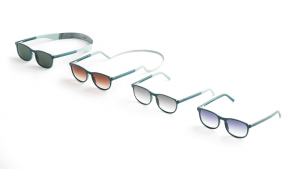 Users have a choice between four different temple style options for the frame, which gives them the option of tailoring their glasses to improve their fit, or so they are more well suited for a particular activity. The Classic option offers a minimalist, clean style and is completely made from 3D printed material.
Users have a choice between four different temple style options for the frame, which gives them the option of tailoring their glasses to improve their fit, or so they are more well suited for a particular activity. The Classic option offers a minimalist, clean style and is completely made from 3D printed material.
However, the Tip, Cord Tip, and Sport Tip styles are all made from a high-grade injection-molded plastic, rather than being entirely 3D printed. The first heats the temple tips during the final fitting for a tighter fit – this way, they can be more closely tailored to a customer’s head size.
The Cord Tip comes with an integrated textile cord so the glasses can hang down around the wearer’s neck, and the Sport Tip includes an integrated, elasticized sports band, so the glasses will be held in place during any sporting activities in which the wearer participates.
“This technology platform signals a move towards a more modern, adaptable way of buying eyewear; a personalised service which is built around the individual, their life, and their personal style,” said Kite Eyewear Co-Founder and CEO Amar Radia.
The eyeglass industry is just one of many that’s starting to rely more heavily on the use of 3D printing to offer product customization. The technology has been used to make smart eyeglasses, augmented reality sunglasses, and even *GASP* affordable eyewear.
Would you wear these 3D printed glasses? Let us know! Discuss this story and other 3D printing topics at 3DPrintBoard.com or share your thoughts in the Facebook comments below.
Subscribe to Our Email Newsletter
Stay up-to-date on all the latest news from the 3D printing industry and receive information and offers from third party vendors.
You May Also Like
3D Printing News Briefs, April 13, 2024: Robotics, Orthotics, & Hypersonics
In 3D Printing News Briefs today, we’re focusing first on robotics, as Carnegie Mellon University’s new Robotics Innovation Center will house several community outreach programs, and Ugogo3D is now working...
Rail Giant Alstom Saves $15M with 3D Printing Automation Software 3D Spark
3D Spark has entered into a three-year deal with the rail giant Alstom. Alstom, a transport behemoth with annual revenues of $16 billion, specializes in the manufacture of trains, trams,...
Meltio Expands Global Reach with New Partnerships in the Americas and Europe
Spanish 3D printing manufacturer Meltio has expanded its sales network across the globe. With the addition of three new partners in the United States, Brazil, Argentina, and Italy, Meltio aims...
3D Printing Webinar and Event Roundup: April 7, 2024
Webinars and events in the 3D printing industry are picking back up this week! Sea-Air-Space is coming to Maryland, and SAE International is sponsoring a 3D Systems webinar about 3D...


